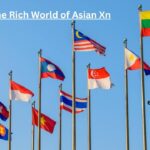Shueke is a traditional cultural dance originating from East Asia, known for its vibrant costumes, dynamic movements, and deep-rooted historical significance. This guide delves into the origins of Shueke, its evolution, and its place in contemporary culture, offering a comprehensive look at this fascinating dance form.
Understanding the Origins of Shueke
The origins of Shueke are steeped in the rich cultural history of East Asia. This dance form, believed to have developed over several centuries, reflects the social, religious, and historical context of its time.
Historical Context of Shueke
Shueke originated in the rural villages of East Asia, where it was initially performed during agricultural festivals and religious ceremonies. The dance was believed to bring good fortune, ward off evil spirits, and ensure a bountiful harvest.
Early Performances
Early Shueke performances were community-centric events, with villagers participating in both the dance and the accompanying music. These performances were characterized by simple, rhythmic movements and basic instruments.
Evolution Through the Ages
Over time, Shueke evolved, incorporating elements from neighboring cultures and adapting to changing social norms. The dance became more elaborate, with intricate choreography and more sophisticated musical arrangements.
Influence of Dynastic Eras
During various dynastic eras, Shueke gained prominence in the royal courts, where it was performed at grand celebrations and official ceremonies. This period saw the introduction of refined techniques and luxurious costumes.
Modern Adaptations
In contemporary times, Shueke has continued to evolve, blending traditional elements with modern influences. Today, it is performed both as a cultural heritage act and as a form of artistic expression in global settings.
Also Read: Discover the Rich World of Asian Xn
The Art of Shueke Performance
A Shueke performance is a mesmerizing display of coordinated movements, vibrant costumes, and rhythmic music. Understanding the components of a Shueke performance can deepen appreciation for this art form.
Key Elements of Shueke
Several key elements define a Shueke performance, each contributing to its unique aesthetic and cultural significance.
Choreography and Movements
The choreography of Shueke is characterized by fluid, expressive movements that tell a story or convey emotions. These movements often mimic natural elements, such as the swaying of trees or the flow of water.
Music and Instruments
Music plays a crucial role in Shueke, providing the rhythmic foundation for the dance. Traditional instruments, such as drums, flutes, and stringed instruments, create a dynamic and immersive auditory experience.
Costumes and Accessories
The costumes worn by Shueke dancers are typically colorful and elaborate, reflecting the dance’s cultural significance. Accessories, such as headdresses and jewelry, further enhance the visual impact of the performance.
Symbolism in Attire
Each costume and accessory in a Shueke performance carries symbolic meaning, often related to the themes of the dance. Colors, patterns, and materials are carefully chosen to align with the narrative being portrayed.
The Cultural Significance of Shueke
Shueke holds a special place in East Asian culture, serving as a medium for storytelling, cultural preservation, and community bonding.
Storytelling Through Dance
One of the primary functions of Shueke is storytelling. The dance often depicts historical events, mythological tales, or moral lessons, preserving cultural narratives for future generations.
Mythological Themes
Many Shueke performances draw inspiration from local mythology, featuring gods, heroes, and mythical creatures. These stories often explore themes of love, bravery, and the triumph of good over evil.
Preservation of Traditions
Shueke plays a vital role in preserving traditional practices and customs. By continuing to perform and teach Shueke, communities maintain a connection to their cultural heritage and pass down valuable knowledge.
Intergenerational Transmission
The transmission of Shueke knowledge from one generation to the next is crucial for its preservation. Elder dancers and musicians often mentor younger members of the community, ensuring the dance’s survival.
Community and Social Functions
Shueke fosters a sense of community and social cohesion. Performances are often communal events, bringing people together to celebrate, reflect, and bond over shared cultural experiences.
Festivals and Celebrations
Shueke is a highlight of many festivals and celebrations, serving as both entertainment and a reminder of cultural identity. These events strengthen community ties and reinforce cultural pride.
Learning and Practicing Shueke
For those interested in learning Shueke, there are various avenues to explore, from community classes to professional training programs.
Finding a Shueke Instructor
The first step in learning Shueke is finding a qualified instructor who can provide guidance and instruction. Many communities have local dance schools or cultural centers that offer Shueke classes.
Community Classes
Community classes are a great way to start learning Shueke, offering a supportive and accessible environment for beginners. These classes often focus on basic movements and foundational techniques.
Professional Training Programs
For those seeking a more intensive learning experience, professional training programs provide advanced instruction in Shueke. These programs may include workshops, masterclasses, and performance opportunities.
Cultural Exchanges and Workshops
Cultural exchange programs and workshops offer unique opportunities to learn Shueke from master dancers and musicians. These programs often provide immersive experiences, allowing participants to fully engage with the dance form.
Practicing and Performing Shueke
Regular practice is essential for mastering Shueke. Dancers often practice individually and in groups, refining their techniques and preparing for performances.
Group Practices
Group practices are crucial for developing coordination and synchronization, as Shueke often involves multiple dancers performing intricate choreography. These sessions foster teamwork and mutual support.
Solo Practice
Solo practice allows dancers to focus on individual techniques and movements, honing their skills and building confidence. Dancers often use this time to work on specific elements of the choreography.
Contemporary Culture Shueke
Shueke continues to thrive in contemporary culture, adapting to modern influences while maintaining its traditional roots.
In the Media
Shueke has gained visibility in various media, from television shows to films and online platforms. This exposure has helped introduce the dance to a wider audience and promote cultural appreciation.
Television and Film
Television and film often feature Shueke performances, highlighting the dance’s beauty and cultural significance. These portrayals can inspire viewers to learn more about the art form.
Online Platforms and Social Media
Online platforms and social media have become important tools for promoting Shueke. Dancers and cultural organizations use these platforms to share performances, tutorials, and cultural insights.
Virtual Performances
Virtual performances have become increasingly popular, allowing Shueke to reach global audiences. These online events provide opportunities for cultural exchange and engagement.
FAQs
What is Shueke?
Shueke is a traditional cultural dance from East Asia, known for its vibrant costumes, dynamic movements, and historical significance.
How did Shueke originate?
Shueke originated in rural East Asian villages, where it was performed during agricultural festivals and religious ceremonies to bring good fortune and ward off evil spirits.
What are the key elements of a Shueke performance?
A Shueke performance includes intricate choreography, rhythmic music, and elaborate costumes. Each element contributes to the dance’s unique aesthetic and cultural significance.
What is the cultural significance of Shueke?
Shueke serves as a medium for storytelling, cultural preservation, and community bonding. It is an important part of festivals, celebrations, and communal events in East Asia.
Can I learn Shueke?
Yes, Shueke can be learned through community classes, professional training programs, and cultural exchange workshops. Finding a qualified instructor and practicing regularly are key to mastering the dance.
How is Shueke being preserved in modern times?
Shueke is preserved through performances, cultural education, and intergenerational transmission of knowledge. Modern media and online platforms also play a role in promoting and sustaining the dance.
Conclusion
Shueke is more than just a dance; it is a vibrant expression of cultural identity, history, and community. Whether performed at a village festival or on a global stage, Shueke continues to captivate audiences and preserve the rich heritage of East Asia. By learning and appreciating this beautiful art form, we contribute to the ongoing celebration and preservation of cultural traditions.
Also Read: Wave_of_Happy: How to Ride the Wave of Joy for a Fulfilling Life



